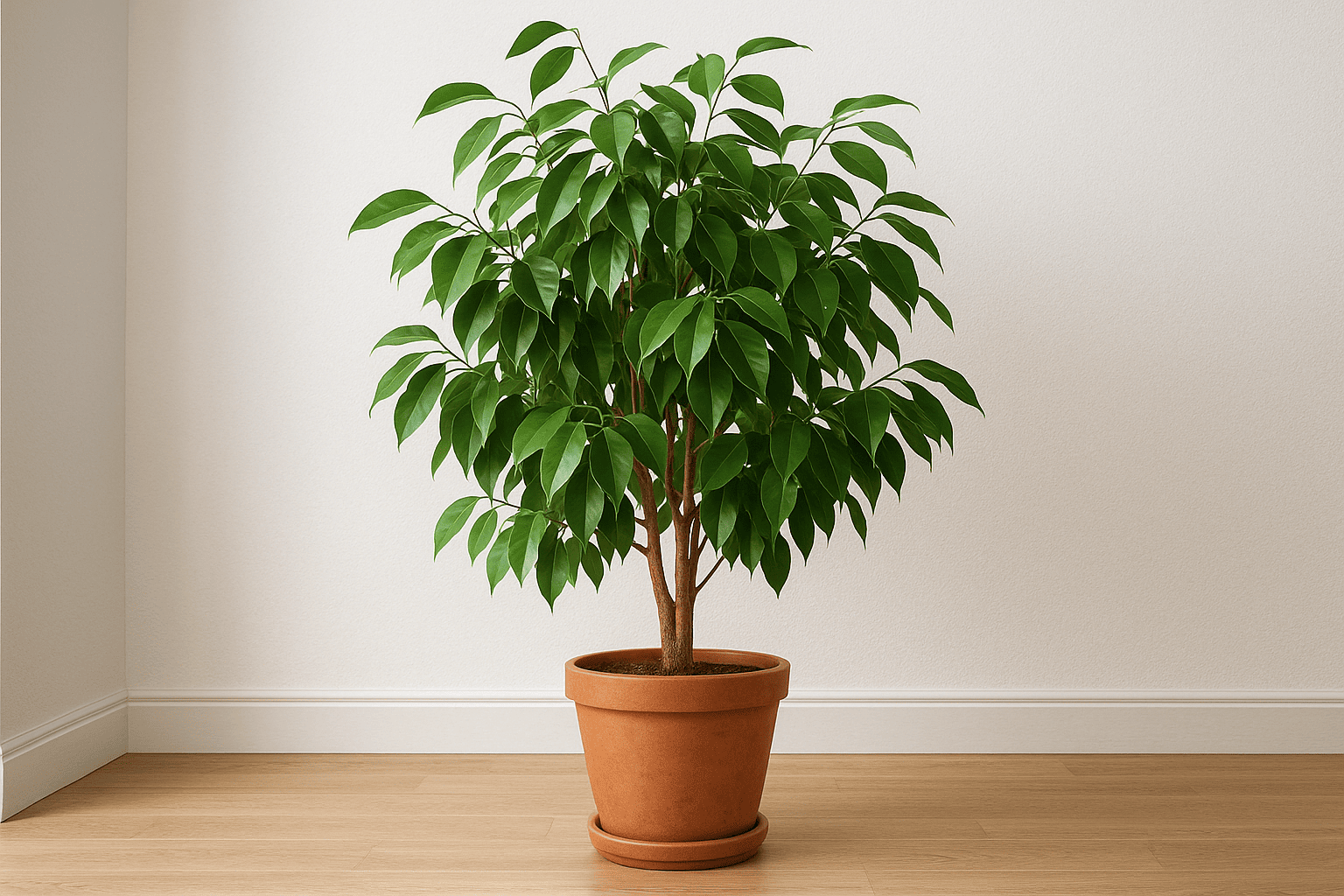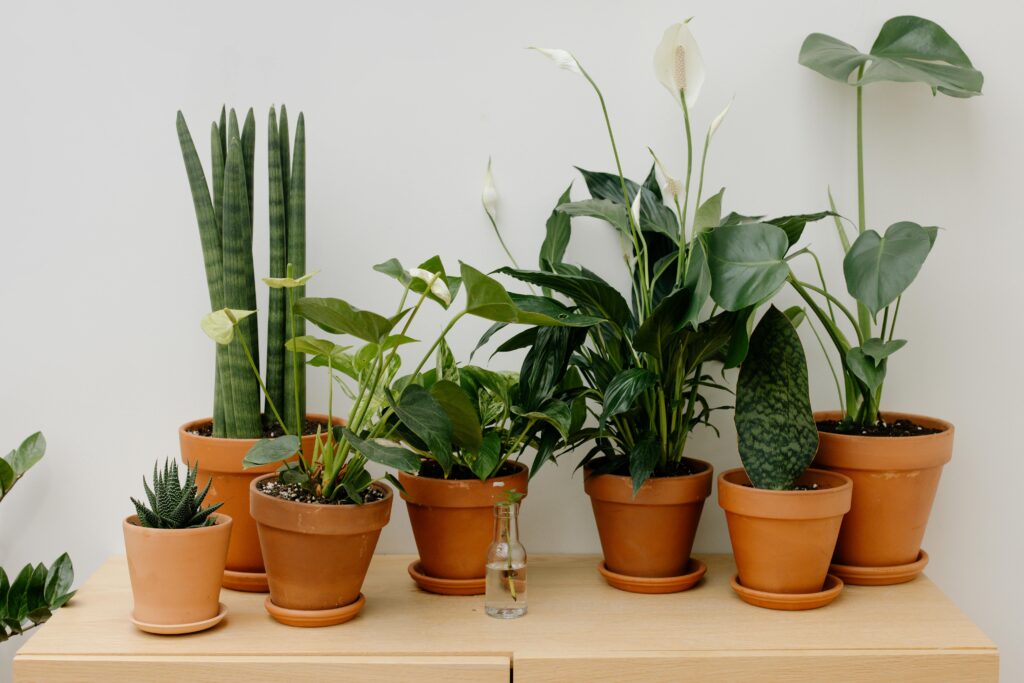A spectacular interior decoration can be achieved by introducing an attractive Ficus indoor plant into your home. The guide discusses popular Ficus tree indoor plants along with specific traits and basic care practices. Your space will benefit from an effortless yet beautiful refreshment through the many ideal indoor Ficus plants for both novices and experienced plant cultivators.

Table of Contents
What is a Ficus Indoor Plant?
The ficus plant indoor belongs to the fig family and exists in different types which observe separate care procedures and show distinct looks. Ficus plants exist in a wide range of dimensions and aspects from different angles so they adapt well to any decorating background. The common characteristic among these plants includes their good looks through glossy leaves while requiring basic maintenance for care.
Ficus trees receive a reputation for being difficult to care for however this plant species shows natural ability to thrive indoors. Ficus species display excellent performance under reduced light so they become excellent choices for environments with low solar illumination. The Ficus tree indoor plant works great as decoration in living rooms along with offices and bedrooms since it needs reduced sun exposure.
Why Choose a Indoor Ficus Plants?
You should think about introducing ficus houseplants into your home environment. Ficus plants provide additional advantages above their aesthetics. Several benefits accompany the addition of a Ficus plant to your indoor garden which you should know about.
- Easy Maintenance: Ficus plants require minimal care if you learn their essential growing requirements. Your ficus plant needs little care because it requires less frequent watering and allows plant owners of any experience level to grow them successfully. Through basic arrangements in your care plan your Ficus plant will maintain optimal health requiring no excessive involvement from you.
- Air Purification: A majority of houseplants function to decontaminate indoor air spaces alongside ficus plants. The natural process of-taking carbon dioxide from air enables these plants to produce oxygen which improves home air quality. You should consider choosing these plants for indoor air quality enhancement because they effectively improve the quality of spaces in which you spend extended periods.
- Aesthetic Appeal: Plants possess natural beauty and the Ficus plant indoor achieves this standard remarkably well. The ficus plant indoor brings lively colors with its large leaves that suit any home décor because of its adaptable structure. A ficus plant can nourish any interior aesthetic because it will adapt to both contemporary minimalist design with its bohemian or classic styles.
- Resilience: When ficus plants acclimate to an indoor living situation they become strongly resistant to their new environment. Low-key mistakes in plant care such as watering the plant late or positioning it in a dim lighting spot will not affect the ficus plant too deeply. Their excellent adaptability accepts periodic neglect from time-pressed persons who need casual plant attention.
Types of Ficus Plants Indoor
The available types of ficus plants match various interior locations together with personal gardening preferences. The selection below includes the top types of ficus plants indoor that could work best for your home.
Ficus elastica (Rubber Plant): The Rubber Plant which has its official name Ficus elastica stands out as one of the most famous ficus species. The substantial dark green glossy leaves of this variety create strong visual appeal which makes it an outstanding addition to every room space. The Rubber Plant requires bright to medium indirect light for its health so it excels in living room spaces together with offices.
- Light needs: Bright indirect light.
- Size: Weed growers can expect these plants to become 10 feet tall when kept inside.
- Care tips: Water should be given when soil on the top layer dries out completely and it needs well-draining soil.
Ficus lyrata (Fiddle Leaf Fig): The Ficus lyrata or Fiddle Leaf Fig stands out to many people because its leaf shape resembles the curve of a violin. The Rubber Plant has experienced strong market demand during the past few years particularly for home decoration spaces. The Fiddle Leaf Fig brings an eye-catching presence to interior spaces because of its distinctive appearance making it an ideal choice for present-day spaces.
- Light needs: Bright indirect light.
- Size: Such plants attain up to 6 feet in height when cultivated indoors.
- Care tips: The plant should receive constant damp soil which must stay moist but never become waterlogged while preventing exposure to drafts.

Ficus benjamina (Weeping Fig): The Weeping Fig known scientifically as Ficus benjamina presents itself as a well-liked ficus species which features elegant pendulant branches combined with fine leaves. People who desire a relaxed home environment should consider this species because of its perfect qualities. This plant type is adaptable for various room environments since it tolerates diverse placement locations.
- Light needs: Medium to bright illumination which occurs indirectly.
- Size: The indoor Ficus will reach heights of 10 feet when properly cared for.
- Care tips: Keep a watch on the soil conditions and water only during periods of dryness.
Ficus microcarpa (Ginseng Ficus): The Ficus microcarpa or Ginseng Ficus stands out as an alternative indoor plant choice. You can include this distinctive plant in your collection since it features an open root system which creates an appealing bonsai effect. This reasonably low-maintenance plant requires bright light that should be indirect to thrive.
- Light needs: Bright indirect light.
- Size: During indoor cultivation Ficus microcarpa reaches between 2 and 3 feet in height.
- Care tips: Regular water is essential yet it requires proper draining features in the pot.
Ficus Indoor Plants Care Tips
- Watering: Ficus plants have moderate tolerance to dry conditions but they require standard watering routines. The main rule when caring for indoor ficus plants is to prevent excessive watering that causes root rot. Test the moisture condition of the soil before you decide to water your plant.
- Light Requirements: Ficus plants flourish best when placed in an area with bright but oblique sunlight exposure. Rubber Plants as well as other species demonstrate an ability to survive in reduced lighting situations. The ideal position for your ficus requires bright but indirect light because direct sunlight can burn its leaf surface.
- Soil and Potting: You should pick a pot with drainage holes because it aids in maintaining good water flow while using well-draining soil. The roots should not remain in water to avoid rotting.
- Pruning: Cutting your ficus plant at regular intervals will help it stay attractive while also strengthening its health growth patterns. Prune your ficus plant by cutting excess dead or broken leaves and also cut off long elongated stems to develop a dense rounded growth habit.
- Fertilizing: A balanced liquid fertilizer should be given to your ficus once per month during its growing period which spans spring through summer. Stop adding fertilizer during periods when the plant rests because it goes into a state of dormancy during fall and winter.
Final Thoughts
A home addition of ficus indoor plants exceeds mere greenery decoration to become a symbolic endorsement of life embracing calmness while preserving natural beauty. Both Fiddle Leaf Figs and Rubber Plants represent distinct options among the many types of ficus plants that will suit every home environment.
FAQs:
1. What is the best ficus plant for indoors?
Choosing the best ficus plant for indoor spaces comes down to lighting conditions and space availability between three main varieties: Fiddle Leaf Fig (Ficus lyrata), Rubber Plant (Ficus elastica), and Weeping Fig (Ficus benjamina) that equally offer attractive value.
2. How much light does a ficus indoor plant need?
Bright light shining indirectly supports the healthy growth of most indoor ficus plants. Yet the Rubber Plant variety shows better tolerance against limited light exposure compared to Fiddle Leaf Fig which needs continuous bright light to thrive properly.
3. Are ficus plants easy to care for indoors?
The ficus plant becomes simple to care for after its initial establishment period. A ficus indoor plant needs moderate water amounts together with stable temperatures and regular lighting conditions for healthy growth.
4. Do indoor ficus plants clean the air?
Ficus indoor plants possess the ability to purify indoor air. The plants serve to clear indoor pollutants while simultaneously creating a better air environment thus achieving dual purposes between decoration and functionality.
5. Why are the leaves on my ficus plant falling off?
Leaf drop in ficus plants can be caused by sudden changes in temperature, overwatering, underwatering, or low light. Ensure your ficus is in a stable environment with proper light and watering habits to prevent leaf loss.

